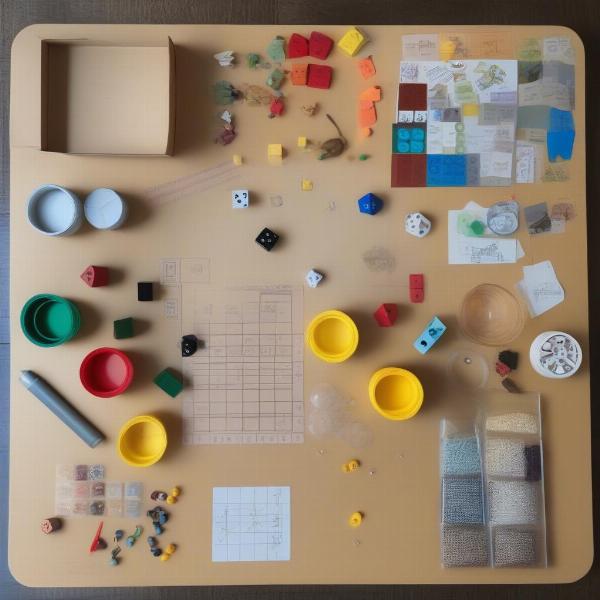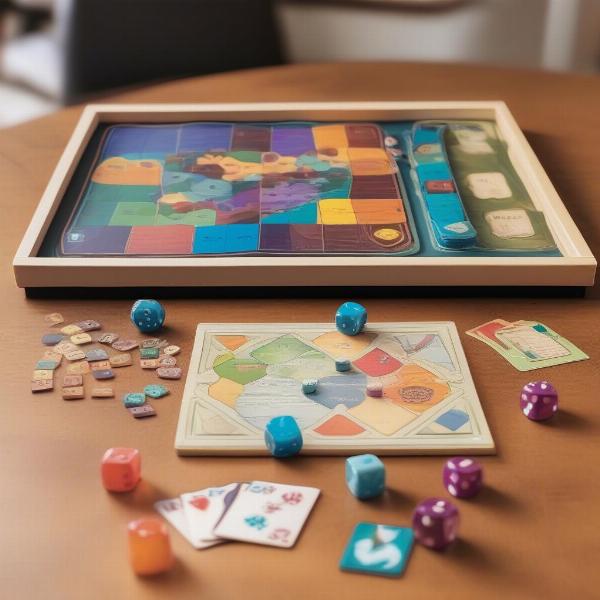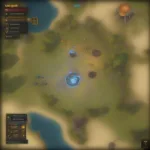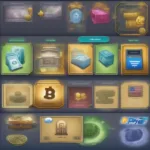Creating a maths board game can be a fun and educational project, whether you’re a teacher looking for engaging classroom activities, a parent wanting to make learning fun at home, or simply someone who enjoys the challenge of game design. This guide will walk you through the process of making your own maths board game, from initial concept to the finished product.
Brainstorming Your Maths Board Game Concept
Before diving into the specifics, consider what kind of maths skills you want to focus on. Do you want to reinforce addition and subtraction for younger children? Or maybe explore more complex concepts like fractions or algebra for older students? The age and skill level of your target audience will heavily influence the game’s mechanics and complexity.
- Target Audience: Determine the age range and skill level of the players.
- Math Skills: Identify the specific mathematical concepts you want the game to address.
- Game Theme: Choose a theme that will make the game engaging and appealing. Space exploration, pirate adventures, or a fantasy quest can all be great starting points.
- Winning Condition: Decide how players will win the game. Will it be based on points, reaching a specific goal, or eliminating other players?
Designing the Game Mechanics
The mechanics of your game are the rules and procedures that govern how it’s played. These should be directly tied to the math skills you want to practice. For example, if you’re focusing on multiplication, players might roll dice and multiply the results to move their game piece.
- Dice Rolling: A classic game mechanic that introduces an element of chance.
- Card Drawing: Can be used to present math problems or challenges.
- Spinner: Another way to introduce randomness and determine movement or actions.
- Problem Solving: Incorporate math problems that players must solve to advance.
- Movement: Determine how players will move around the board. Will it be based on dice rolls, card draws, or solving problems?
Creating the Game Board and Components
Bring your game to life by designing an attractive and functional game board. Consider the theme of your game when designing the layout and visuals. The board should be easy to navigate and understand.
- Board Layout: Design the path players will follow. This could be a simple linear path, a circular track, or a more complex network of spaces.
- Visuals: Create or find images that fit your theme and enhance the visual appeal of the game.
- Game Pieces: Choose or create game pieces that are easy to distinguish and move around the board.
- Cards and Dice: If your game uses cards or dice, design or purchase them accordingly.
- Instructions: Write clear and concise instructions that explain how to play the game.
 Designing and Crafting Math Board Game Components
Designing and Crafting Math Board Game Components
Testing and Refining Your Game
Before finalizing your game, it’s essential to test it thoroughly. Play the game with your target audience and gather feedback. Observe how they interact with the game and identify any areas that need improvement.
- Playtesting: Gather a group of players to test the game and provide feedback.
- Rule Adjustments: Refine the rules based on feedback from playtesting.
- Balance and Fairness: Ensure that the game is balanced and fair for all players.
- Engagement and Fun: Make sure the game is engaging and fun to play.
Examples of Math Board Game Ideas
Need some inspiration? Here are a few ideas to get you started:
- Fraction Frenzy: Players roll dice and use the results to create fractions. They then compare their fractions to determine who moves forward.
- Algebra Adventure: Players solve algebraic equations to earn treasure and advance through a fantasy world.
- Geometry Gauntlet: Players use geometric shapes to build structures and solve puzzles.
- Number Ninja: Players use mental math skills to quickly solve arithmetic problems and defeat their opponents.
These are just a few examples to spark your creativity. The possibilities are endless!
Additional Resources for Creating Engaging Educational Games
Beyond the core mechanics and design of your math board game, consider enriching the learning experience by incorporating other educational elements. This will make your game more engaging and valuable for players.
- Storytelling: Weave a narrative into the game to create a more immersive experience.
- Real-world Applications: Connect the math concepts to real-world scenarios to demonstrate their practical relevance.
- Differentiated Instruction: Provide different levels of difficulty or challenges to cater to varying skill levels.
- Collaboration: Encourage teamwork and communication through collaborative gameplay elements.
 Completed Math Board Game Ready for Playtime
Completed Math Board Game Ready for Playtime
Making a maths board game can be an enriching and rewarding experience. By following these steps and incorporating your own creativity, you can create a game that is both fun and educational. So gather your materials, unleash your imagination, and start building!
FAQs
- What materials do I need to make a maths board game? Common materials include cardstock, markers, dice, game pieces, and glue.
- How long does it take to make a maths board game? The time required can vary from a few hours to several days, depending on the complexity of the game.
- Can I adapt existing board games to incorporate maths concepts? Absolutely! Many classic board games can be easily modified to include math elements.
- Where can I find more resources for creating educational games? There are numerous online resources and books available that offer tips and ideas for creating engaging educational games.
- How can I make my maths board game more challenging? Increase the complexity of the math problems, introduce new game mechanics, or add strategic elements.
- Is it necessary to have artistic skills to create a visually appealing game? Not at all! You can use pre-made images, clip art, or even simple drawings. Functionality and clarity are more important than artistic perfection.
- How can I ensure my game is accessible to players with different learning styles? Incorporate a variety of visual, auditory, and kinesthetic elements into the game.
Conclusion
Creating a math board game is a fantastic way to make learning fun and engaging. By carefully considering your target audience, designing engaging mechanics, and thoroughly testing your creation, you can develop a game that effectively reinforces math skills while providing hours of entertainment. So, get creative, experiment, and build a math board game that will inspire young minds to embrace the world of numbers! Share your creations and inspire others to bring the joy of learning to life through play.

